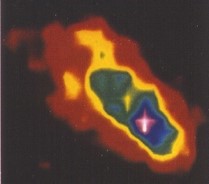Colleagues:
Ah… That Joyous Season is upon us once again.
In the Hatheway household it runs from about now ’till Twelfth Night,
our daughter’s birthday. We’re careful to let Guy Fawkes Day slip quietly
by before we start to celebrate. (We’re all for Parliament but burning
effigies is a real downer.)
And, what a grand year it is shaping up to have been (yes, in the future
perfect tense). Speaking of which…
AEH fixed the wedge caused by
thermal gradients….
… witnessed the solar eclipse in the Alleghenies…
… chaired a conference in San Diego….
… was snowed in Massachusetts…
… and got lost in Irvine.

That last one was a real embarrassment since
your author was raised about 20 miles from there. But that was before Irvine
“grew up.”
Ivory and Jade are having a
terrific year also, assuring the performance of systems from zoom lenses to
gimbal controls and assuring the safety of critical lenses and windows by
helping designers select suitable materials and specify proof tests. No broken
glass so far.
So, here’s a wassail to you, one and all, for your companionship and
cheerfulness throughout the year.
God Bless you, Tiny Tim!
And everyone else, Enjoy! Here we
go-o-o-o-o-o…..
Al H.
11-10-17









